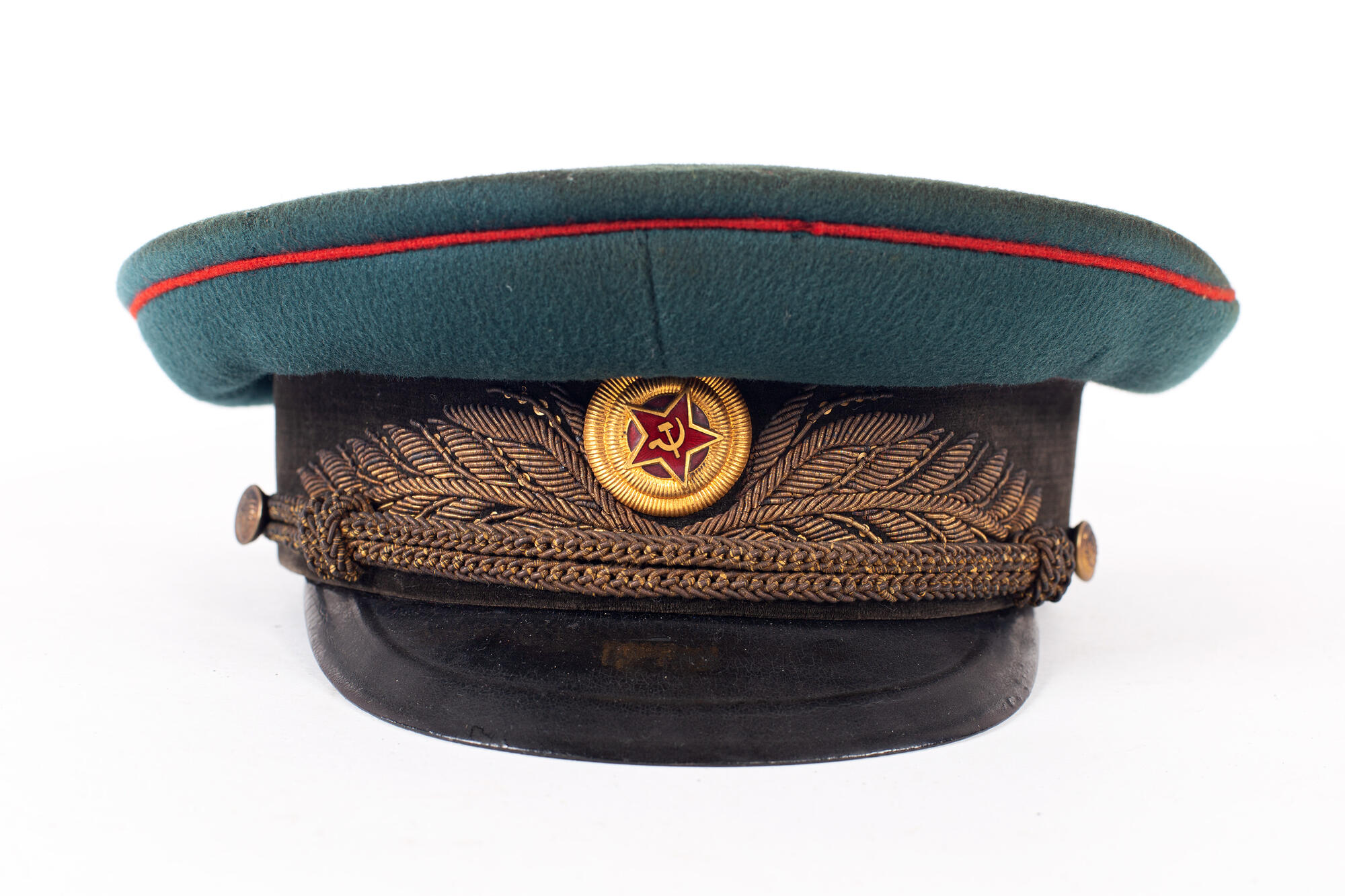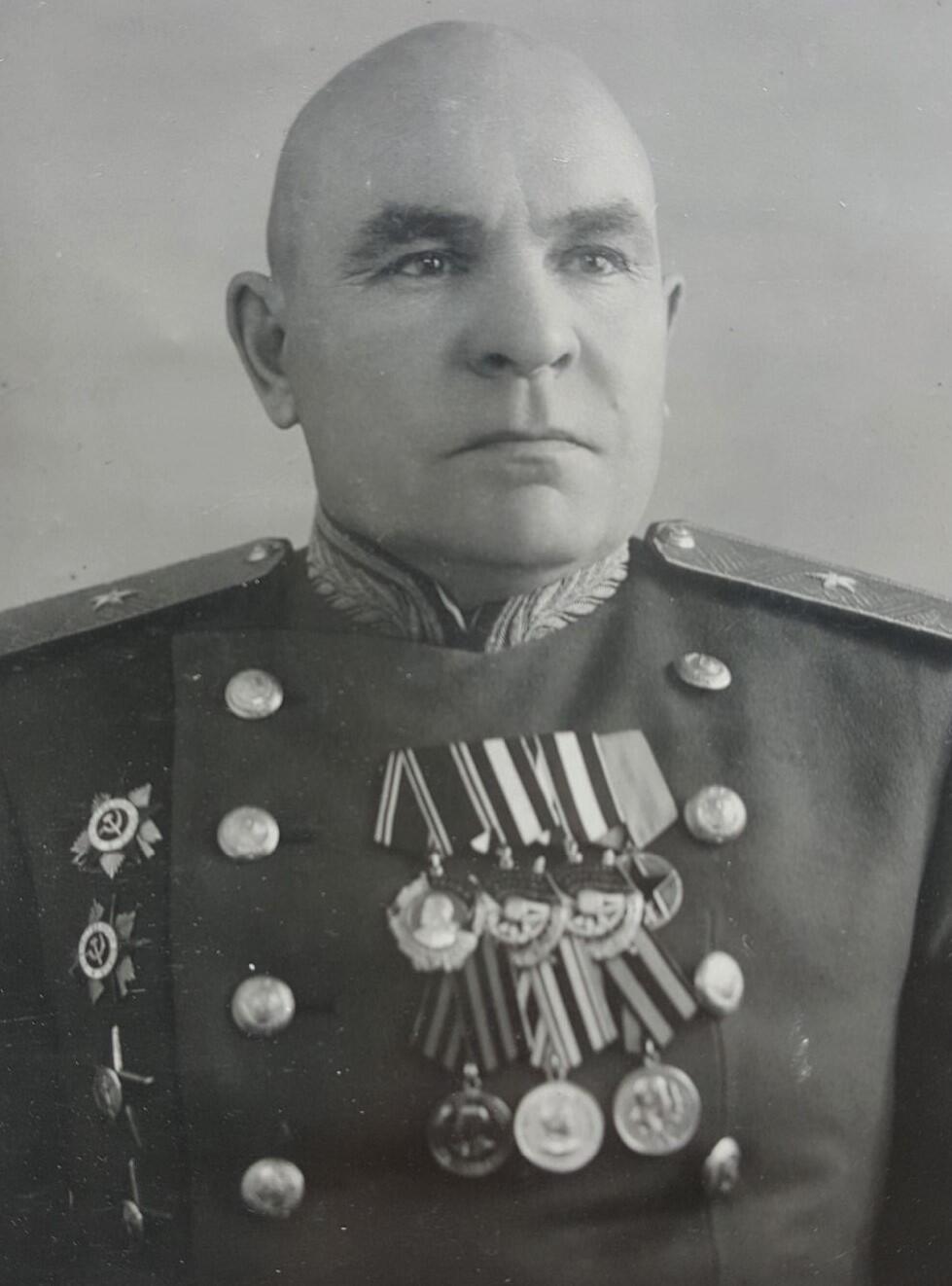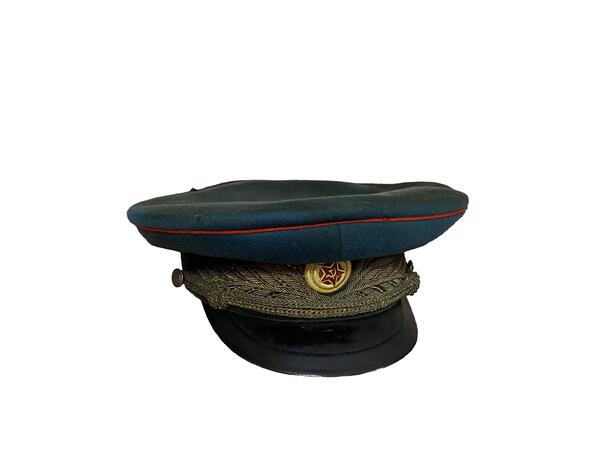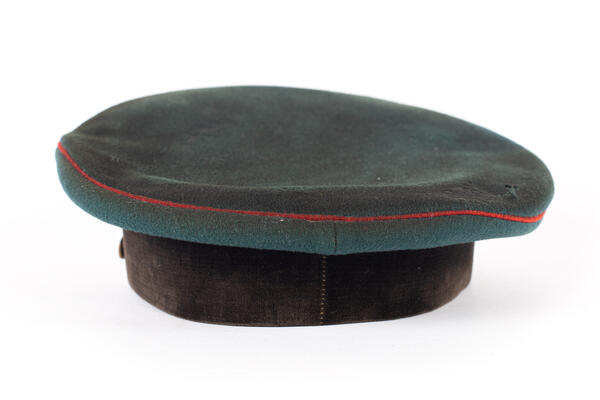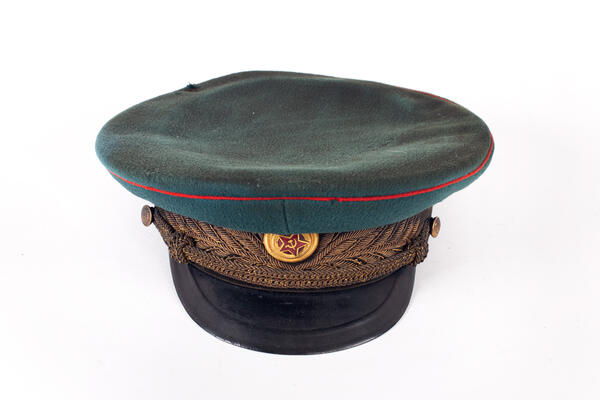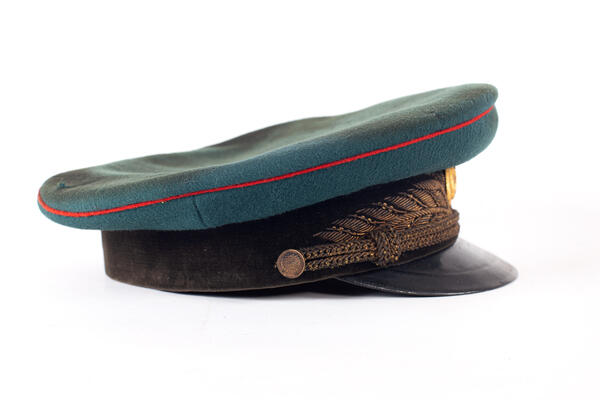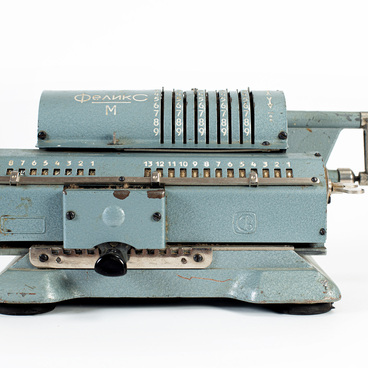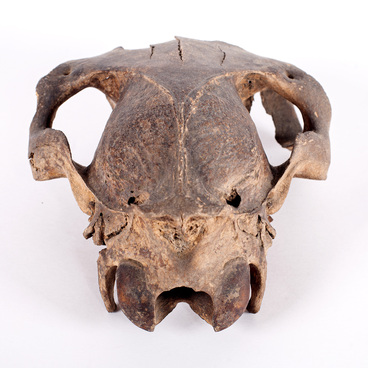After the Revolution of 1917, the Red Army used the old uniform without the tsarist insignia. A year later, a competition was organized to develop a new standard uniform for the Workers’ and Peasants’ Red Army. Painters Boris Kustodiev and Viktor Vasnetsov took part in the competition. The new uniform was based on the one used by the Imperial Russian Army in the early 20th century and included a tunic, an overcoat, dark green or blue trousers, and a cap.
The first distinctive signs of the army of the new Soviet state appeared on the chest and headwear of officers. The cap with red piping featured a cockade. Translated from French, the word “cockade” means “rooster feathers”. It can be made of ribbons, metal braid, or cloth folded in loops or a wreath. Later, the first Soviet cockade was called the emblem, and the officer’s cockade with a red star was officially introduced in 1940.
The cap from the collection of the Gromov Museum of Local Lore belonged to Mikhail Yakovlevich Balalayev, Major General of Tank Forces. During his military career, he was awarded the Order of Lenin, the Order of the Red Banner, the Order of the Patriotic War, 1st class, the Red Star, the medals “XX Years of the Workers’ and Peasants’ Red Army”, “For the Victory over Germany in the Great Patriotic War”, and “For the Victory over Japan”.
Mikhail Balalayev was born into a family of a barge hauler in the village of Koshkarovo, Nizhny Novgorod Governorate, on September 15, 1894. At the age of 20, Balalayev was drafted into the tsarist army. For his bravery and courage, the young gunner was awarded two Crosses of Saint George. His last rank in the Russian Imperial Army was that of a senior non-commissioned officer. In 1918, Balalayev joined the Workers’ and Peasants’ Red Army.
Mikhail Balalayev fought against the army of Alexander Kolchak, participated in the suppression of a kulak uprising, and was a member of the All-Union Communist Party of Bolsheviks. He also commanded an armored battalion, was the senior instructor of a gunnery course, and supervised the training of tank crewmen and the preparation of armored vehicles for the army.
Major General Mikhail Balalayev took personal control over the disarmament and capture of Japanese and Chinese troops, led combat operations, and supervised the maneuvers of tank forces to ensure their combined operations with the infantry. The veteran of the Great Patriotic War died in 1986 on his birthday, September 15.
The first distinctive signs of the army of the new Soviet state appeared on the chest and headwear of officers. The cap with red piping featured a cockade. Translated from French, the word “cockade” means “rooster feathers”. It can be made of ribbons, metal braid, or cloth folded in loops or a wreath. Later, the first Soviet cockade was called the emblem, and the officer’s cockade with a red star was officially introduced in 1940.
The cap from the collection of the Gromov Museum of Local Lore belonged to Mikhail Yakovlevich Balalayev, Major General of Tank Forces. During his military career, he was awarded the Order of Lenin, the Order of the Red Banner, the Order of the Patriotic War, 1st class, the Red Star, the medals “XX Years of the Workers’ and Peasants’ Red Army”, “For the Victory over Germany in the Great Patriotic War”, and “For the Victory over Japan”.
Mikhail Balalayev was born into a family of a barge hauler in the village of Koshkarovo, Nizhny Novgorod Governorate, on September 15, 1894. At the age of 20, Balalayev was drafted into the tsarist army. For his bravery and courage, the young gunner was awarded two Crosses of Saint George. His last rank in the Russian Imperial Army was that of a senior non-commissioned officer. In 1918, Balalayev joined the Workers’ and Peasants’ Red Army.
Mikhail Balalayev fought against the army of Alexander Kolchak, participated in the suppression of a kulak uprising, and was a member of the All-Union Communist Party of Bolsheviks. He also commanded an armored battalion, was the senior instructor of a gunnery course, and supervised the training of tank crewmen and the preparation of armored vehicles for the army.
Major General Mikhail Balalayev took personal control over the disarmament and capture of Japanese and Chinese troops, led combat operations, and supervised the maneuvers of tank forces to ensure their combined operations with the infantry. The veteran of the Great Patriotic War died in 1986 on his birthday, September 15.
